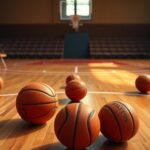Table of Contents
In a pivotal moment for the future of space exploration and industry, China has unveiled its latest technological achievement: an inflatable, reconfigurable space module. This advancement signifies the country’s commitment to developing in-orbit manufacturing capabilities, joining the ranks of the United States and other nations striving to establish large-scale production facilities beyond Earth.
As humanity ventures deeper into the cosmos, the ability to manufacture and produce materials in space is becoming increasingly vital. The Institute of Mechanics, affiliated with the prestigious Chinese Academy of Sciences, has announced that this newly developed module can be compactly folded for launch and expanded once in orbit, creating a versatile and stable environment.
This innovation serves as a fundamental building block for constructing future space factories.
The emergence of space factories
Space factories are emerging as a significant area of interest, drawing considerable investment from both government and private sectors. Varda Space Industries, a California-based startup, recently made headlines by launching its first satellite, W-Series 1, which it claims is the world’s inaugural space factory.
This milestone highlights the increasing trend of utilizing space for industrial purposes.
Yang Yiqiang, director of the Sky Flight Science and Technology Centre at the Institute of Mechanics, noted that inflatable module technology marks a transition from theoretical ideas to functional engineering.
He stated that this advancement strengthens China’s capability to independently harness space resources. This innovation could enable direct manufacturing in the unique environment of space.
Technological advancements in focus
The Institute of Mechanics recently conducted tests showcasing the capabilities of a reconfigurable flexible in-orbit manufacturing platform.
Developed in collaboration with several domestic research institutions, this platform represents a significant step in advancing China’s space manufacturing agenda. The results of these tests were disclosed on November 3, underscoring the notable progress achieved in this sector.
These innovations position China to harness the benefits of space manufacturing, which includes the ability to produce materials that are challenging or impossible to create on Earth.
The low-gravity environment of space facilitates the development of superior materials and products, paving the way for breakthroughs across various industries.
Global competition in space manufacturing
Competition in space manufacturing intensifies
Countries are rapidly establishing their own space factories, leading to increasing competition in the sector. The United States, with its vast resources and established aerospace industry, remains a key player. However, China’s swift technological advancements are closing the gap, prompting discussions about the shifting balance of power in space.
Investment in space manufacturing is not solely reliant on government funding; private companies are also entering the fray. The push to develop efficient, scalable production methods in orbit is expected to drive a wave of innovations, potentially reshaping industry standards on Earth.
Future implications
China’s inflatable space factory technology and its implications
The implications of recent developments in space manufacturing extend beyond technological advancements. The ability to manufacture in space opens new avenues for economic growth and resource utilization. As China expands its capabilities, it could lead to the emergence of a new economic sector focused on space-based production, attracting investment and talent globally.
China’s inflatable space factory technology marks a significant shift in space exploration and industry. By emphasizing in-orbit manufacturing, this innovation has the potential to create new materials and production processes that could reshape both space and terrestrial industries. As countries compete for leadership in this emerging domain, the balance of power in space may be redefined, presenting both unprecedented opportunities and challenges.





